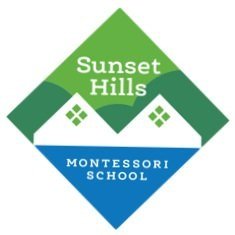Primary
3 Years Old to 6 Years Old
A Typical Day in a Primary Montessori
The child arrives, hangs up their coat and backpack, is greeted by the Montessori teacher with words of welcome, and is invited into the classroom to begin the day. A classroom may start the day with a short "circle" or "community" time or individual work time until all of the children in the classroom community have arrived.
Children are then invited to begin the "work cycle," or uninterrupted work time, working individually, with a friend, or in a small group. During this time, children enjoy "lessons" or introductions to new concepts they can practice and learn at their own pace. The goal is to set the child up for success so that they feel purposeful in their work, have a strong sense of self, and have an intrinsic love of learning. The "work cycle" is then followed by a longer "circle" time as they prepare to transition to lunchtime or recess. "Circle" time may include an introduction to new materials, group games, singing, grace and courtesy lessons, storytelling, or special visitors or presentations.
The children assist in preparations for lunch by arranging and setting tables. They also help with the clean-up after lunch, sweeping and wiping their tables, so that they can practice the skills of daily living and feel a sense of pride in what they are capable of accomplishing and doing for themselves and their classroom community. When lunch clean-up is complete and everything has been put away, the children enjoy recess, a time to enjoy socializing, spending time outdoors, and developing through gross motor movement.
Afternoon Kindergarten consists of continuing individual work that was started in the morning and group activities—particularly in nature studies, advanced geography work, and art appreciation. The dedicated afternoon Kindergarten time also provides the benefit of a small group size, allowing for curated individual attention with a curriculum that offers concepts encompassing what is presented in a traditional Kindergarten education setting as well as an array of ideas and concepts that extend far beyond what one would expect to find in a typical kindergarten setting.
Dismissal is accompanied by parting words and acknowledgment of the reconnection with parents and caregivers following a day of learning and growing!
Curriculum
The Primary classroom is designed in a manner that allows children to work independently and at their own developmental pace. The curriculum consists of the following areas:
Practical Life: Activities such as spooning, pouring, sweeping and buttoning, to promote small motor control, care of the environment and care of the self.
Sensorial: Activities dealing with shape, size, color, weight, sound, etc, which promote further development of the senses.
Language: There are two language areas: comprehension, which includes activities such as matching, classifying, and sequencing; and phonics and reading activities ranging from simple sound games to whatever reading level the child attains.
Math: Activities range from one-to-one correspondence and object-to-numeral matches to whatever level the child attains. The emphasis is on using manipulatives to give the child a concrete foundation for the abstract math work he/she will do in later years.
Geography: Activities include puzzle maps, materials that have an international aspect such as matching shoes from other countries or spooning rice with a Chinese soup spoon, books about the cultures, and international snacks. These form an introduction to physical and cultural geography.
Art: Activities to show the care and use of art materials, to encourage creativity, and just to have fun! Sometimes we put out only red, yellow, blue, black, and white paint so the children mix their own colors for their paintings. Jr/Sr Kindergarteners also begin studies of artists such as Monet, Matisse, and Cassatt.
Science: Activities include nature related lessons such as living and non-living parts of a tree, weather, and the solar system.
Specialty Classes
Spanish: Once a week the Primary children spend 40 minutes participating in Spanish lessons. During these lessons the children receive a basic introduction to the Spanish Language as well as culture.
Music: Once a week the Primary children enjoy a half-hour of musical instruction through the Music Together Program. In this class they are introduced to many songs, rhythm, beat and cultures through music.


